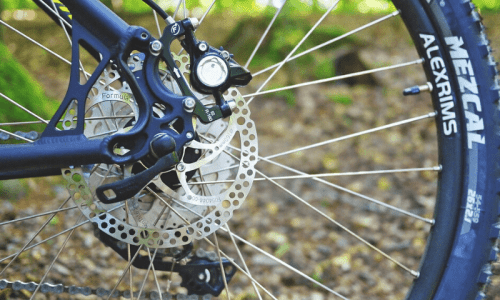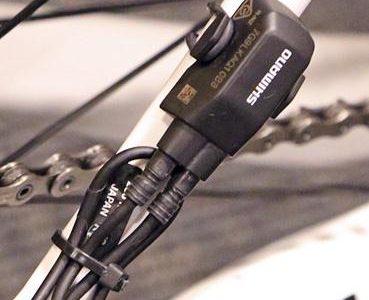Over the past few years, the number of cyclists on roads has increased significantly. Many governments also focus on cycling as a better alternative form of transportation, making it an upward trend. Besides, it’s a healthier and greener alternative to motor vehicles, not to mention a lot more fun!
While cycling is considered more preferable, more cyclists also mean more bicycle-related accidents will occur. Cyclists need to be careful and more aware of the risks they take while on the road. Aside from safety precautions like helmets and protective gear, which have been made mandatory for cyclists in some places, bicycle bells are another safety step to avoid accidents.
While some states have made having bicycle bells a part of their road code, others don’t have any such law. However, even if it’s not compulsory to have a bicycle bell where you live, we strongly recommend installing one for your own safety.
Which States Legally Require You to Have a Bicycle Bell?
 Bike bells aren’t required by law, except if you live in South Carolina, Georgia, New Jersey, or New York. These regions have made it compulsory that a bell must be equipped on the bikes. However, even in these states, the law is not very much enforced, and not many adult bikes are seen there with bells on them.
Bike bells aren’t required by law, except if you live in South Carolina, Georgia, New Jersey, or New York. These regions have made it compulsory that a bell must be equipped on the bikes. However, even in these states, the law is not very much enforced, and not many adult bikes are seen there with bells on them.
The New York Code states regarding bike equipment that a person shall operate no bike unless it is equipped with a bell or any device that is capable of signaling audibly from at least one hundred feet. The same code applies in New Jersey and Georgia as well. Some states require an audible warning, not necessarily a bike bell when passing or approaching another road user or pedestrian. A yell like “step aside, please!” is also considered enough in places like California, Montana, Pennsylvania, Wisconsin, and Minnesota.
In places like Ohio, using a bell is up to you, but the use of sirens and whistles is prohibited. In Florida, the case is more complicated where the State Road Code does not require a bell, but in some places like Orlando, it is necessary to mount a bell or horn with rear and headlights. The case of Washington DC is different because bells were compulsory up to 2013, but not anymore.
What are the Pros and Cons of Having a Bicycle Bell?
As with everything else, having a bicycle bell has its upsides and downsides.
Here are some advantages of using them:
Safety
 Bike bells enhance safety and are considered essential for cyclists riding on narrow roads to warn other cyclists or passersby and avoid accidents. Sharp turns are the most critical places when kids and adults need a bike bell to alert others about their presence since they do not know what to expect beyond them. Depending on the side that the bike is turning, some bells even produce different sounds for moving left or right.
Bike bells enhance safety and are considered essential for cyclists riding on narrow roads to warn other cyclists or passersby and avoid accidents. Sharp turns are the most critical places when kids and adults need a bike bell to alert others about their presence since they do not know what to expect beyond them. Depending on the side that the bike is turning, some bells even produce different sounds for moving left or right.
Affordability
Most bike bells are super cheap and have a low cost of installation. Some people believe that professionals need to be hired to install the bell, when in fact, one only needs to locate a suitable space on the handlebar to fix it.
Bike bells do have some disadvantages, too:
Placement
Most of the time, you have to change your grip to sound the bell, and it is not usually placed strategically on the bike for safety. Ringing the bell might do more harm than good when you change your grip. It may also cause the reaction time to be slowed, and the bell may go ignored.
Easily Ignored
Most cyclists get rid of their bike bells because of pedestrians’ cluelessness and the lack of attention of drivers with rolled-up windows, which eliminates the point of equipping a bell.
What Are Some Good Bicycle Bells to Buy?
There are plenty of bicycle bells available out there. For example,
- The TOMASLINK 2 pieces Aluminum Classical Bell is affordable and fits on a low budget, having a crisp, clear sound.
- The Knog Oi Bike Bell might be a bit on the high end of the price scale but is suitable for someone looking for a top-notch bell with built-in cable clips and is available in Brass, Copper, and Aluminum.
- The REKATA Aluminum Bike Bell remains one of the best-rated, with a good loud sound “loud enough to alert pedestrians” and an easy installation mechanism.
What Factors Should I Consider Before Buying a Bicycle Bell?
When you’re shopping for a bicycle bell, there are some factors you should check before making a purchase:

Durability and Quality
It can be challenging to find a good quality bike bell since they are mostly inexpensive and made with cheap materials. One should look for a bell with as few moving parts as possible that is simply constructed, rustproof, and UV-resistant.
Right Fit
Always check the diameter and handlebar style to choose the most suitable bell for your bike. To be sure the bell will fit on the handlebars, for ease and speed of operation, one should consider staying wary of the cabling configuration as well.
Left or Right Handed
Depending on whether you are left or right-handed, you must be careful while choosing which handlebar to mount the bell on. Make sure it is easily within your grip and comfort and that the handlebar does not slip from their hands.
Loudness
Go for a bell with a loud enough sound that alerts others without startling them, letting them know of your presence.
Conclusion
While it may not be necessary to use a bike bell, it is still essential to do so for your safety. Bike bells are effective in alerting others about the presence of a cyclist and play a significant role in preventing bike-related accidents. While you may use audible warnings like simply yelling at others to move aside, bike bells are the best and simplest form of communicating as a cyclist.
I’ve spent way more time in the bike trade than anyone should reasonably want to. In that time I’ve wanted to make cycling jargon and marketing easier to cut through to help people get the bike of their dreams.
When I’m not writing about bikes, I can be seen out bikepacking on single speed bikes or teaching kids how to ride.


